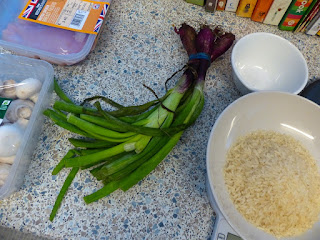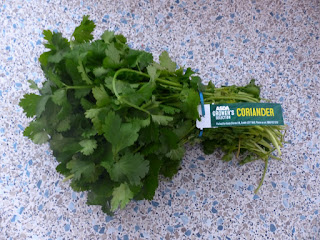Thursday and still no Random Kitchen post? Well, therein lies a tale.
I'd written the text as usual and was just adding some photos, I hit ctrl-Z to undo a photo I'd put in the wrong
place, for some reason that deleted the entire blog text too... and then
Blogger decided to choose precisely that moment to execute a
non-recoverable autosave.
Which is not just a source of deep frustration, but a pity too.
If Blogger hadn't decided to delete my post, I'd have told you all about the recipe for "Baked Custard with Macerated Blackcurrants" from the Riverford Farm Cook Book, which you can also read online. I'd have detailed my suspicions about the term "baked custard" (much like "grilled cheese", it feels like it's missing something) - and, of course, the word "macerated", which just sounds a bit grim.
You'd have heard about my inability to locate blackcurrants in the Lewisham/Deptford area and my decision to go with a vaguely cobbled-together alternative that would probably work okay despite not really being the same thing at all:
 |
| I mean, purple fruit is purple fruit, right? |
I'd have told you about the other compromises I made along the way, including substituting the required "crème de cassis or brandy" for some fairly potent Alcohol Of Some Description that a friend brought back from Kosovo...
 |
| Ainsley pictured for scale |
...and, erm, accidentally using granulated sugar instead of caster sugar. Not so much a compromise as a cock-up, that one.
Managed to fish out about 40% of the granulated and replace it with caster though, so, you know. Could be worse.
I'd have told you how pleased I was to realise I owned a roasting tin big enough to serve as a bain marie for a "23cm gratin dish":
And I'd have shown you the epic old-school ruler I used to make sure the water in my mahoosive bain marie was deep enough.
 |
| Eddie, this one's for you |
I'd definitely have shared the pleasant sight of curds being strained out of the custard.
 |
| (Also those bubbles can't be ideal) |
You'd have enjoyed my growing scepticism about the 50-minute oven time prescribed by the recipe; then again, it specifically says the custard should be cooked "until just set", with nothing about it being brown on top or anything else, so I can only assume that this:
...and this:
...are how it was supposed to be, as unappealing as it looked.
Then I'd have talked about the berries and how I macerated them two ways (one with Kosovo grog, one without):
And we'd have ended up with some badly-presented slop in a bowl, because that never ever happens in the Random Kitchen.
You might have been puzzled to learn that Riverford's visitors "often tell us this the best thing they have ever eaten", given that it's just some overly creamy, barely set custard with some slightly soggy fruit on top. I certainly was. It tasted nice, of course, but it was hardly luxurious.
So much so, in fact, that the next day I popped the leftovers into the oven for an extra half an hour at a higher heat.
 |
| That's a bit more like it |
As well as looking more attractive, the baked custard, now being actually baked to some extent, also held its shape when being served up this time. Speaking of serving, I just used unmacerated fruit second time round - we didn't feel like the alcohol added anything much to proceedings (though that might be because I was using the wrong berries and some freaking weird alcohol).
And as if that wasn't enough, I could have told you all about the third attempt I made. (There were ingredients left over and I don't have much use for double cream, despite Novelli's best efforts.)
This time I decided to use individual ramekins (well, Gü dessert jars) in the hope this might lead to a more set dessert. They still required the full 50 minutes to look vaguely done, and even then, my oven conspired to cook them unequally - thinking about it, this may go some way to explaining some of my less successful baking efforts...
As for the congratulations and macerations, to quote the recipe, "It also works with ... raspberries as well." That's fortunate, because I was all out of purple berries by this stage. Instead, I warmed some raspberries with some sugar and let them get squishy as per the recipe, and they did indeed work rather well on top as a tangy counterpoint to the rich custard.
(Looks a bit like I've just poured a tin of chopped tomatoes over the whole thing, but what can you do?)
The flavour was still a bit meh, to be honest - I think I'm learning that I just prefer sugar to cream, perhaps because I'm northern and cheap - but this was definitely the most successful execution of the three and made for a perfectly satisfactory dessert.
And so it would have been nice to tell you all about it.
But I can't, because Blogger swallowed my post whole.
Three-word verdict: Screw you, Blogger.










 The book: How To Boil An Egg (Jan Arkless)
The book: How To Boil An Egg (Jan Arkless)










 The book: Ainsley Harriott's Meals In Minutes
The book: Ainsley Harriott's Meals In Minutes










 The books:
The books: 



















